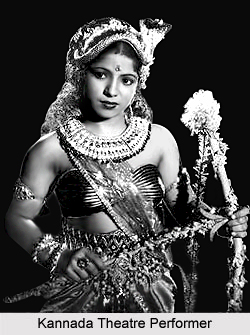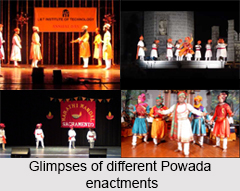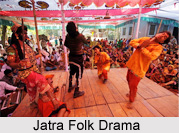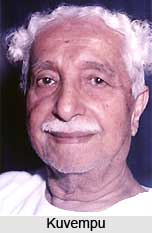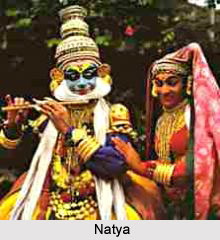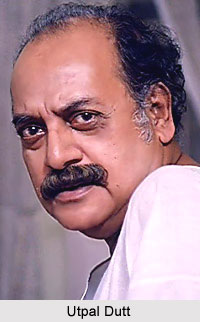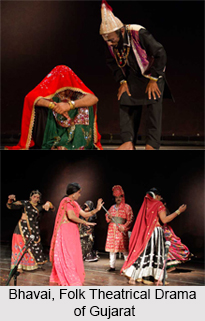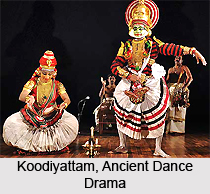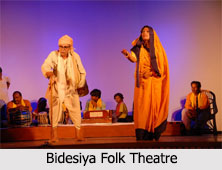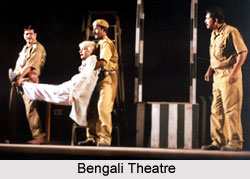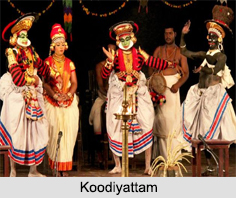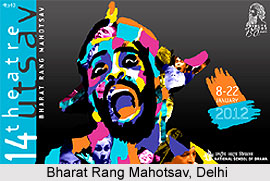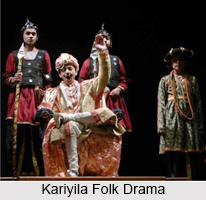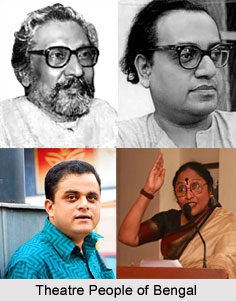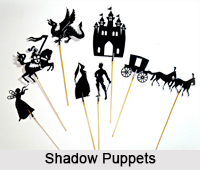 Puppetry is an ancient folk art and leather puppetry is one form of it. The leather puppetry had its origin back to 3rd century in Karnataka and Andhra Pradesh. Now days, the leather puppetry is can be seen in large numbers in Chitradurga, Bellary and Kolar districts of Karnataka. It is also termed as `Tolu Bommalata` in Karnataka where the term `tolu` means skin or leather and `bommalata` means `puppet show`.
Puppetry is an ancient folk art and leather puppetry is one form of it. The leather puppetry had its origin back to 3rd century in Karnataka and Andhra Pradesh. Now days, the leather puppetry is can be seen in large numbers in Chitradurga, Bellary and Kolar districts of Karnataka. It is also termed as `Tolu Bommalata` in Karnataka where the term `tolu` means skin or leather and `bommalata` means `puppet show`.
The puppeteers who practice the leather puppetry are known as `Gomberamas` or `Kille kyatas`. There are total 40 numbers of troupes and they are the only roaming tribe practicing this profession. Leather puppetry is also known as shadow puppetry. The most important feature of shadow puppetry is that it creates a world of fantasy and colour just behind the screen. The shadow performance is the unique characteristic of this type of puppetry.
In leather puppetry, the actual puppet is hidden behind a screen and only its shadow is shown to the audience. A lot of skills are required to present a shadow or leather puppet show. These puppeteers are mostly illiterate but there knowledge and experience in this art is noteworthy. They bring in life a piece of skin and mould it into different roles behind a thin backdrop illustrating the creative urge to enliven the show.
Goat or deer is painted with vegetable dyes to make the leather puppets. Now, the modern techniques have entered in the life of the leather puppeteers also. They have learned to make leather puppets by using simple plastic x-ray sheets replacing the traditional animal skin. The leather puppets are flat structures and are transparent. The arms, legs and head of the puppet are movable.
The musical narration used in the leather puppet show is very simple and vivid. It gives noteworthy support to the visual depiction. The extempore prose narration is interspersed with anecdotes and incidents. The musical instruments used in the leather puppetry include the native instruments like mridanga and the paw. When the sticks in paw are when rubbed against each other, a peculiar but thrilling sound is produced. The most popular themes of the leather puppet show were that from the great Indian epics like the Ramayana and the Mahabharata. The heroes and villains of local mythology were the most popular figures of leather puppetry.
A simple and small stage is required to organize leather or shadow puppet show. A white screen is important since it is behind this that the puppets are played and on which shadows of the performing puppets are cast. The puppeteers keep themselves hiding from the view of the audiences behind a thick black blanket. There is lamp kept hung behind the white screen. The reflection of the light falls on the puppets whose shadows ultimately appear on the transparent white cotton screen.
The mythological stories are represented in a very colourful and entertaining way by using these leather puppets. These puppets, which are as said earlier, are made of goatskin, which are later cured and dried and made translucent by a special process. This popular art form of leather puppetry is now a dying art and needs to be renovated.







